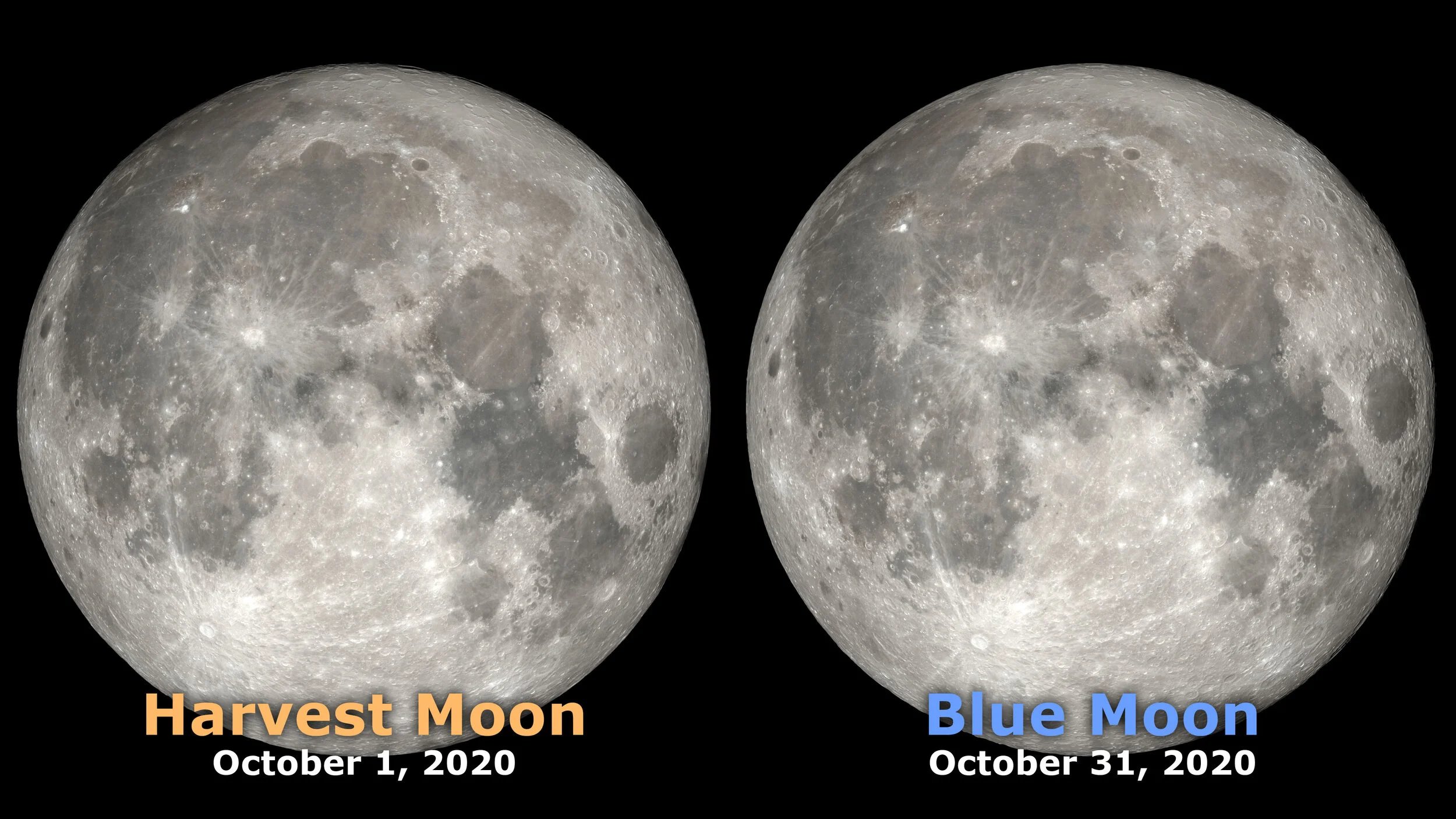The Full Moon on Halloween is a Special One
/Credit: NASA/JPL-Caltech
This year's full moon on Halloween has many names - blue moon, micromoon, Hunter's Moon, and the Beaver Moon are just a few. See this article from NASA for a discussion of the many names of Saturday's full moon.
Is this Halloween’s full moon a blue moon?
A common definition of a blue moon is the second full moon during the same calendar month. This means that all full moons on Halloween will also be a blue moon. Full moons occur every 29.5 days which is less than the number of day in October. So the answer is yes by this definition. NASA’s Scientific Visualization Studio created the image below.
CREDIT NASA's Scientific Visualization Studio
Another traditional definition of a blue moon is that it is the third full moon in a season where there are 4 full moons. Normally a season has 3 full moons since it is 3 months long. The seasonal or traditional definition of a blue moon is independent of where you live and what time zone you are unlike the calendar definition. See https://en.wikipedia.org/wiki/Blue_moon#Blue_moons_between_2009_and_2037 for a list of seasonal and calendar blue moons between 2009 and 2037. The full moon on Saturday is not a seasonal blue moon.
What is a micromoon?
Saturday's full moon is also a micromoon. A micromoon is when the moon is at its furthest point in its orbit from the earth during its full or new phase. The orbit of the moon is elliptical and the distance from the earth to the moon varies quite a bit. It can be as close as 356,500 km at perigee (average is 363,300 km) or as far as 406,700 km at apogee (average is 405,500 km). On Oct 30 the moon is 406,394 km away. There is a significant difference in the size and brightness of a supermoon and micromoon. A supermoon is 14% bigger and 30% brighter than a micromoon.
CREDIT: NASAJPL Edu
Educators and astronomy enthusiasts: JPL has an activity on how you could measure this difference over many months.
On average we will see a full moon on Halloween every 19 years. The next one will occur in 2039. If the sky is clear be sure to check out the full moon on Halloween as it is a special event that won’t happen again for quite a while.




